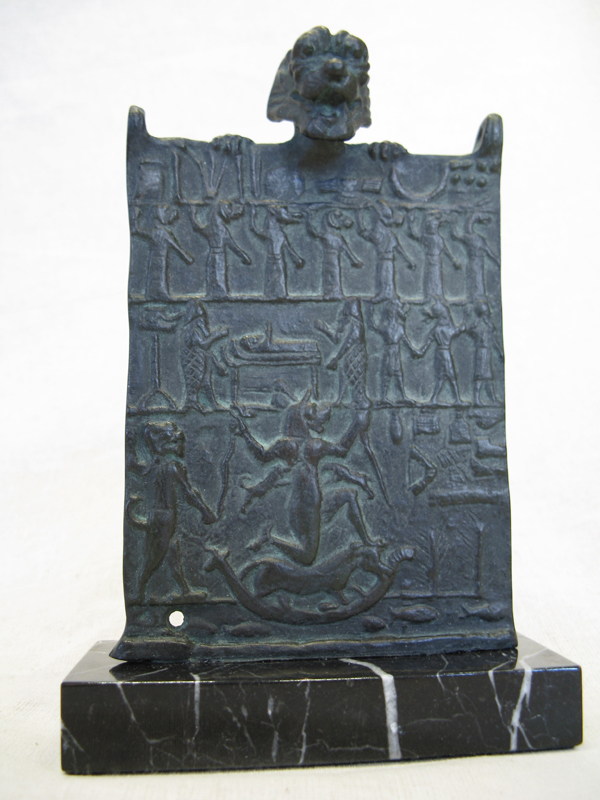Assyrian

"Hell" Plaque
Near Eastern (Neo-Assyrian)
replica: from the Louvre, Paris
gift of: the Nasser Family
date of the original: 934-612 BC
provenance of the original: Mesopotamia or Syria; now in the Louvre, Paris
description: Relief scenes on plaque with figurine peering over the top. Resin replica; bronze original. On base: height 15.5 cm, width 10 cm, depth 4 cm.
The so-called “Hell Plaque” is an Assyrian healing device against the demoness Lamashtu. Often called “she who erases,” Lamashtu was blamed for the deaths of children and mothers, poisoning water, killing plants, and causing nightmares. She was also believed to consume the flesh and drink the blood of adult men. She had a hairy body with the head of a lioness, the teeth and ears of a donkey, and bird talons.
This plaque was hung over the bed of an invalid in hopes of driving Lamashtu out. She herself is depicted in the lower register, holding snakes and suckling lion cubs while riding a donkey in a boat. The uppermost register displays the different gods involved in the healing process: the sun of Shamash, the crescent moon of Sin, the lightning bolt of Adad, and the winged disc of Ashur. In the second register, seven animal-headed spirits guard the door to a bedchamber. In the third register, the patient is depicted lying on a bed, flanked by two priests, who are aided by three animal spirits. Overlooking the plaque is Lamashtu’s husband, the demon Pazuzu (see: The Demon Pazuzu), the only one who is able to coax her away.